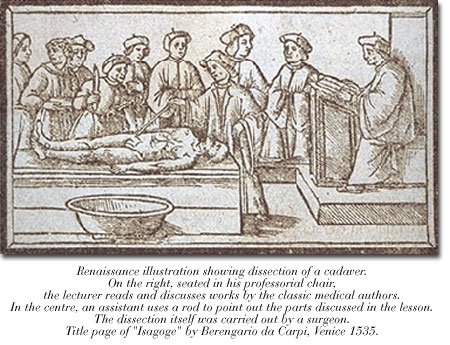|
|
|
|
 |
 |
 |

The anatomical term is derived from the ancient Greek and means
dissection. Dissection of cadavers was in fact the first and
most important technique for studying the human body. Dissection
of cadavers is a method for describing the organs and their
relationship to one another as perceived by the human eye (macroscopic
anatomy). If we then wish to examine the fine structure of organs,
we must make use of instruments used to magnify images: lenses,
microscopes etc. (microscopic anatomy).
The science of human anatomy may be defined as the study of
the form and structure (macroscopic and microscopic) of individual
human body parts. Human anatomy is thus a biological discipline
(biology being the science of vital phenomena; the science of
life). Human anatomy and human physiology (science of vital
body functions) jointly allow us to understand how a healthy
human body is made and how it works. The science of human anatomy
is also of fundamental importance in the training of future
doctors and more particularly surgeons, who must become acquainted
with and be able to recognize the parts of the body. |
 |

|
|
| |
|
|
|